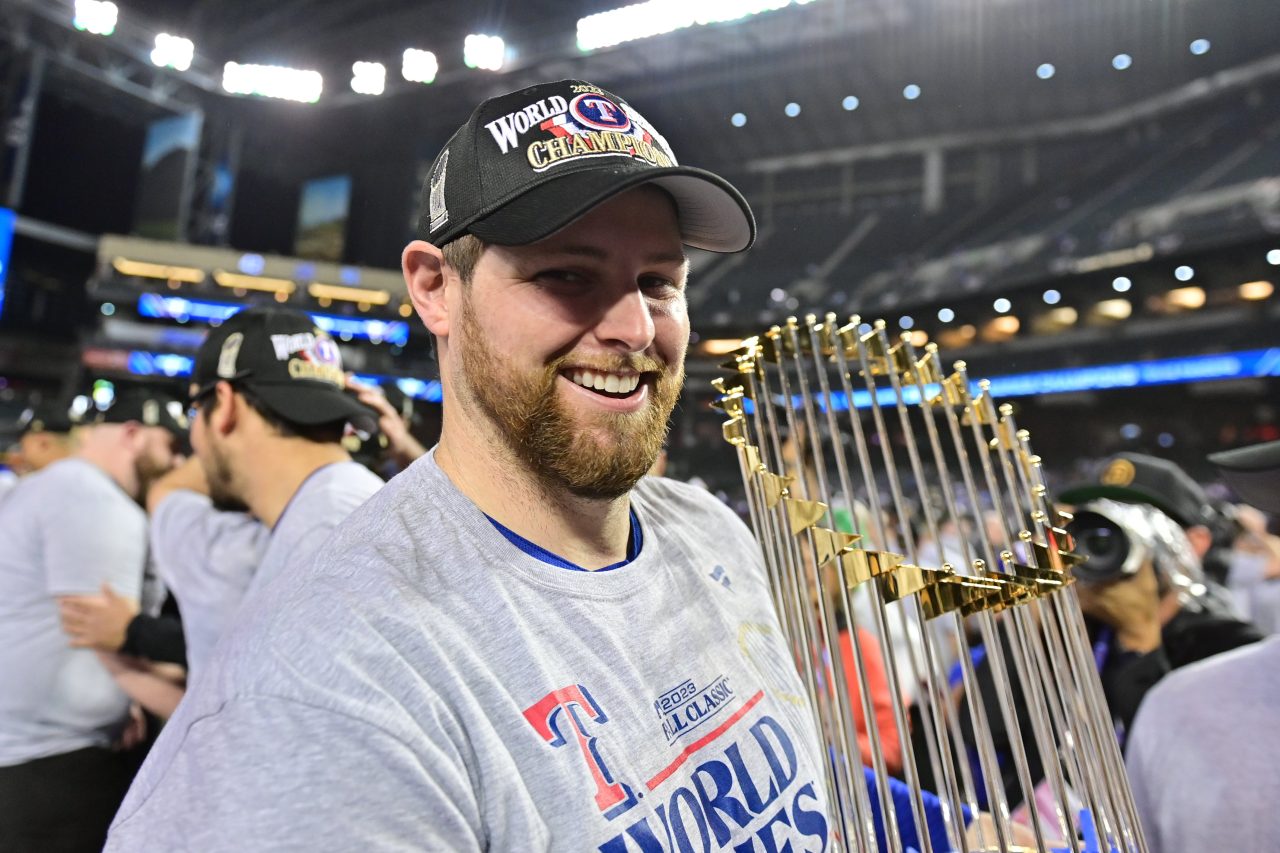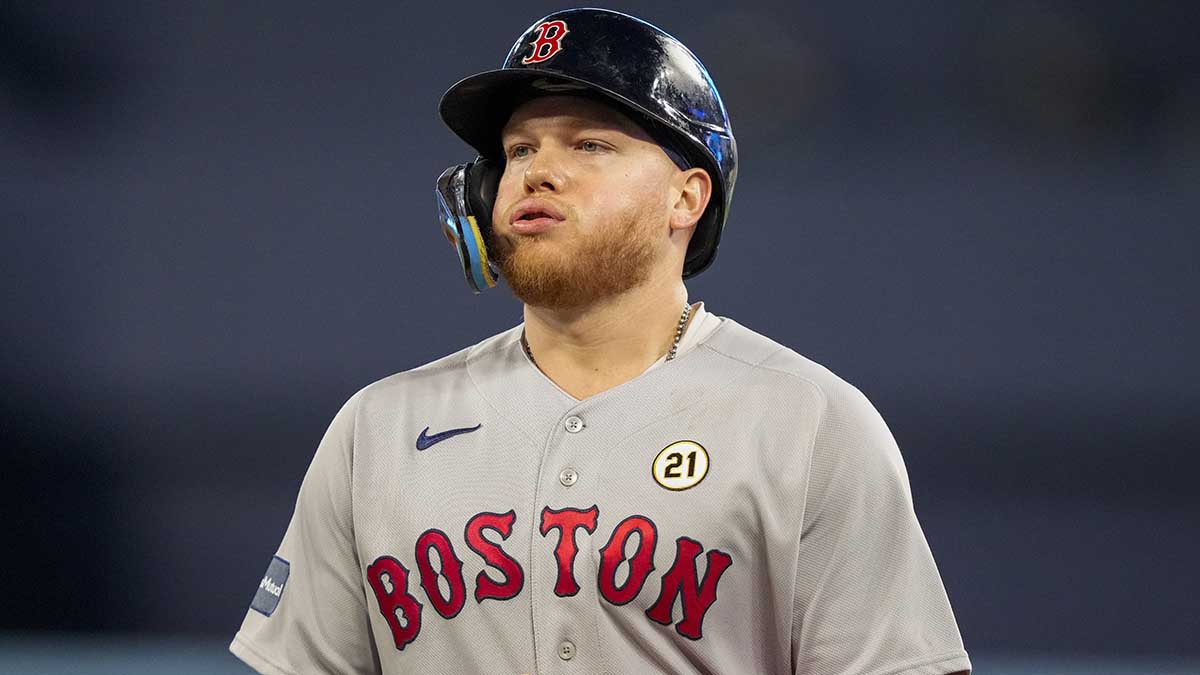We will judge Craig Breslow by whatever big move he does or (gulp) doesn't make this winter. With a guarantee from chairman Tom Werner that the Red Sox would be "full throttle" this offseason, we can only assume (again, gulp) that something bigger looms on the horizon.
In the meantime, Breslow has been tinkering around the margins, and it's worth revisiting the five primary moves of his brief tenure to glean what they tell us about his priorities and approach.
Nov. 17: Trades 2B Luis Urias to Mariners for RHP Isaiah Campbell
Stay in the game with the latest updates on your beloved Boston sports teams! Sign up here for our All Access Daily newsletter.
The first couple of entries on this list will be heavy on symbolism. If there's a player who signified the end of Chaim Bloom's tenure, it's Urias. Faced with numerous holes, a team only a game out of wild card contention, and calls from the clubhouse to upgrade the roster, Bloom instead sat out the 2023 trade deadline except to take a flyer on Urias, a former breakout star with the Brewers who had regressed to the point of a Triple-A demotion.
Instead of providing a spark, Urias just gave the Red Sox more of the same at second base, where he hit .225 and cost the team three runs defensively, per Statcast.
There was no point in keeping him on the roster, and so Breslow effectively used his first move to undo his predecessor's last one. In the process, he added a former second-round pick who had started his career as a starter before injuries forced him to the bullpen, where he touched 98 mph and posted a 2.83 ERA in 27 outings last year.
Campbell will enter spring training as part of a very competitive bullpen mix.
Dec. 5: Trades Alex Verdugo to Yankees
If there's a player who signified the start of Bloom's tenure, it's Verdugo, who arrived from the Dodgers as the centerpiece of the Mookie Betts trade and then spent four maddeningly mediocre seasons being given every chance to emerge as an All-Star or at least an everyday player, before ultimately failing on both counts.
Since he clearly wasn't a long-term part of Boston's plans -- it's fair to say manager Alex Cora had had his fill of Verdugo's immaturity -- it made no sense to keep him, and Breslow acted quickly.
MORE RED SOX COVERAGE
While the decision to trade him to the Yankees raised some eyebrows, it demonstrated that Breslow won't be constrained by conventional wisdom.
In return, the Red Sox received three pitchers with low-to-medium ceilings: Richard Fitts, Nicholas Judice, and Greg Weissert. Only the last has big-league experience, but the point seemed to be to build not just minor-league pitching depth, but also to add arms that can compete for bullpen spots. That competition should be robust.
Dec. 6: Trades for Rule 5 pick Justin Slaten
The prospect the Red Sox traded to the Mets for the seventh pick in the Rule 5 draft, left-hander Ryan Ammons, was unlikely to help in the big leagues this year. The same cannot be said of Slaten, a big right-hander who finally harnessed his command at Double-A with the Rangers, where he cut his walk rate by nearly two-thirds.
Slaten posted a 2.87 ERA between Double-A and Triple-A while striking out 13 batters per nine innings. He throws hard and will also join the bullpen competition, which is part of a pattern.
Dec. 8: Acquires OF Tyler O'Neill from Cardinals
Given the overly left-handed composition of the outfield, O'Neill provides some balance to a group that includes Masataka Yoshida, Jarren Duran, and Wilyer Abreu. Whether he's an everyday player remains to be seen, given his struggles against right-handed pitching, but at the very least, the two-time Gold Glover should start against lefties while providing above-average corner outfield defense.
It's hard to judge the O'Neill deal until Breslow finishes constructing the roster. If he's the only addition in the outfield, then it suggests the Red Sox will ask the oft-injured slugger to be more than a platoon player, which is a recipe for underperformance. If he's being acquired to play a complementary role with the possibility of growing into something more, that's more palatable.
In any event, the cost (pitchers Victor Santos and Nick Robertson) wasn't high.
Dec. 13: Signs Cooper Criswell from Rays
Red Sox fans could be forgiven for momentarily fearing that Breslow was just cosplaying Bloom by signing a Rays reliever.
The 6-foot-6 Criswell has some experience in the majors, with a lifetime ERA of 5.97 in 12 games between the Angels and Rays. He's a sinker-slider guy who doesn't break 90 mph and certainly would give the Red Sox bullpen a different look, though he's likely to open the season at Triple-A as rotation depth.
If there's one aspect of Breslow's approach that Criswell's addition highlights, along with virtually everything else on this list, it's that Breslow is spending the early portion of the offseason adding organization pitching depth as well as potential bullpen arms.
The real work will come with finding a top-of-the-rotation arm, preferably alongside someone right behind him. In the meantime, Breslow builds out the back of the roster, which was a common refrain during the Bloom era, but also a recipe for finishing in last place.
Let's see what bigger moves are yet to come.



